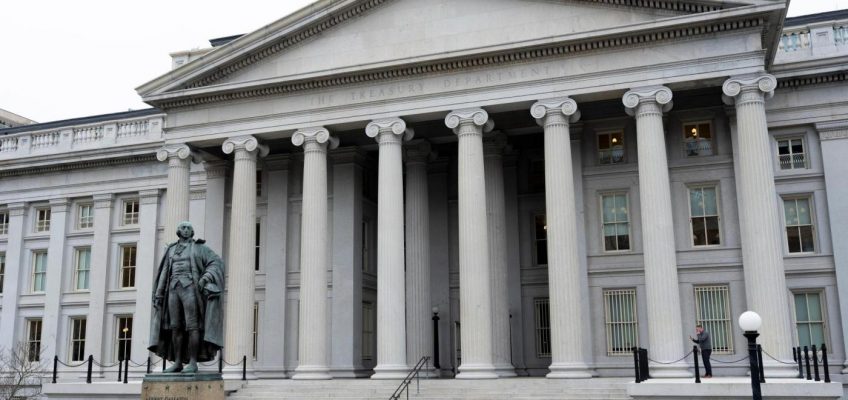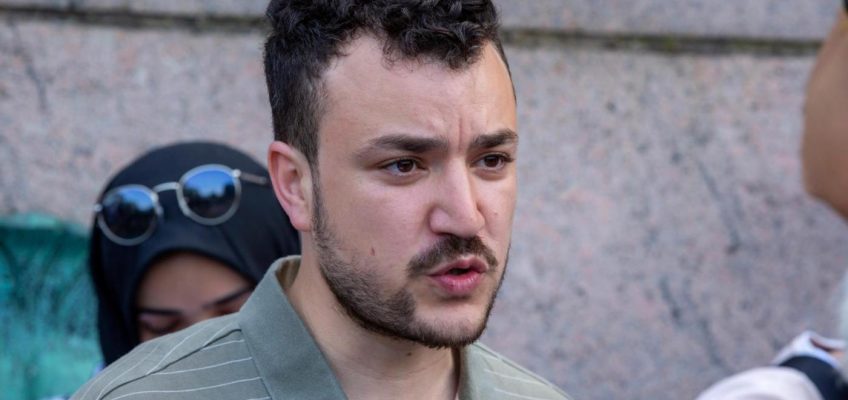By FATIMA HUSSEIN
WASHINGTON (AP) — The Trump administration’s move to classify thousands of living immigrants as dead and cancel their Social Security numbers is an escalation of the president’s crackdown on people who were legally allowed to live in the U.S. under programs instituted by his predecessor.
The move will make it much harder for affected immigrants to use banks or other basic services where Social Security numbers are required.
The White House says that “by removing the monetary incentive for illegal aliens to come and stay, we will encourage them to self-deport.”
However, the affected individuals newly added to the Social Security Administration’s “Death Master File” are in the country legally. Immigrant advocates say the administration is committing “digital murder.”
Here’s what we know about the administration’s plan to note some immigrants as dead in Social Security data:
Who is being affected?
A Trump administration official said the SSA moved roughly 6,300 immigrants’ names and Social Security numbers to a database that federal officials normally use to track the deceased after the Department of Homeland Security identified them as temporarily paroled aliens on the terrorist watch list or with FBI criminal records.
The administration has not provided evidence of this assertion.
The SSA maintains the most complete federal database of individuals who have died, known as the Death Master File. It contains more than 142 million records going back to 1899.
In its latest move, the White House has taken to referring to it as the “Ineligible Master File.”
Effective April 8, Customs and Border Patrol terminated parole for all these individuals with written notice to each of them, the Trump administration official said. The official was not authorized to speak publicly and discussed the development on condition of anonymity.
What happens when you lose access to a Social Security number?
Without a Social Security number, you cannot legally get a job, collect Social Security benefits or receive certain government benefits. Some school districts may prevent children from enrolling in school without a Social Security number.
And while some banks allow people to open an account without a Social Security number, stripping immigrants of their Social Security numbers will cut them off from many other financial services.
Devin O’Connor, a senior fellow at the Center on Budget and Policy Priorities, said that the move is unprecedented and that never before have people been deliberately added to death rolls when they are still alive.
“The administration is saying they have the right to declare someone as dead when they have not died — where is the oversight here?” O’Connor asked. “And what happens when they make a mistake?”
Former Social Security Administrator Martin O’Malley told The Associated Press, “The police state is here, now.” The administration’s latest move violates privacy rules meant to protect everyone’s personal data, he said.
How does this affect the broader public?
Experts warn that the targeting of immigrants could just be the beginning.
O’Connor said, “The idea that you can rename the Death Master File and decide you can put people on the list as persona non grata” is unheard of and should concern everyone.
“If they can do it to one group, they can do it to anyone — in error or in malice,” Kathleen Romig, the director of Social Security and disability policy at the Center on Budget and Policy Priorities, posted on the BlueSky social media app Thursday.
“A person must be (asterisk)lawfully admitted(asterisk) to the U.S. to be assigned a Social Security number,” she said in another post.
“Don’t let the Trump Administration gaslight you. Their ‘digital murder’ policy isn’t about undocumented immigrants. It’s about people who came here legally.”
How else is the administration tracking down immigrants?
Earlier this week, DHS revoked the legal status of hundreds of thousands of immigrants who used the CBP One app. They had generally been allowed to remain in the U.S. for two years with work authorization under presidential parole authority during the Biden era but are now expected to self-deport.
Additionally, DHS and the Treasury Department signed a deal this week that would allow the IRS to share immigrants’ tax data with Immigration and Customs Enforcement for the purpose of identifying and deporting people illegally in the U.S. The agreement will allow ICE to submit names and addresses of immigrants inside the U.S. illegally to the IRS for cross-verification against tax records.
The acting IRS commissioner, Melanie Krause, who had served in that capacity since February, stepped down over that deal.
Advocates say the Treasury-DHS information-sharing agreement violates privacy laws and diminishes the privacy of all Americans.




